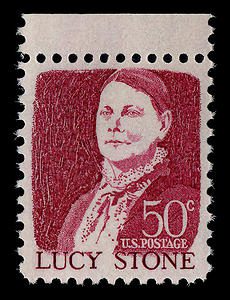It was on this day in 1850 that the first National Women’s Rights Convention gathered in Worcester, Massachusetts.

Two years earlier Lucretia Mott, Elizabeth Cady Stanton and others had organized a gathering at Seneca Falls, in the Fingerlakes region of upstate New York. At that gathering they agreed there should be a regular gathering focusing on the issues of women’s rights, with a particular emphasis on obtaining full voting rights.
The organizers will forever be remembered as part of the pantheon of women and their male supporters, including Mott and Stanton, Lucy Stone, Paulina Kellogg Wright David, Abby Kelley Foster, Harriot Hunt, Eliza Kenney, Dora and Eliza Taft.
William Lloyd Garrison the noted abolitionist was among the leading men who supported this convention.
Wikipedia’s unsigned essay on the convention describes the momentous event.
This “first National Woman’s Right’s Convention met in Brinley Hall in Worcester, Massachusetts, on October 23–24, 1850. Some 900 people showed up for the first session, men forming the majority, with several newspapers reporting over a thousand attendees by the afternoon of the first day, and more turned away outside. Delegates came from eleven states, including one delegate from California – a state only a few weeks old.
“The meeting was called to order by Sarah H. Earle, a leader in Worcester’s antislavery organizations. Paulina Wright Davis was chosen to preside and in her opening address called for “the emancipation of a class, the redemption of half the world, and a conforming re-organization of all social, political, and industrial interests and institutions.”
“The first resolution from the business committee defined the movement’s objective: “to secure for [woman] political, legal, and social equality with man, until her proper sphere is determined by what alone should determine it, her powers and capacities, strengthened and refined by an education in accordance with her nature. Another set of resolutions put forth women’s claim for equal civil and political rights and demanded that the word “male” be stricken from every state constitution. Others addressed specific issues of property rights, access to education, and employment opportunities, while others defined the movement as an effort to secure the “natural and civil rights” of all women, including women held in slavery.
“The convention considered how best to organize to promote their goals. Mindful of many members’ opposition to organized societies, Wendell Phillips said there was no need for a formal association or founding document: annual conventions and a standing committee to arrange them was organization enough, and resolutions adopted at the conventions could serve as a declaration of principles. Reflecting its egalitarian principles, the business committee appointed a Central Committee of nine women and nine men. It also appointed committees on Education, Industrial Avocations, Civil and Political Functions, and Social Relations to gather and publish information useful for guiding public opinion toward establishing “Woman’s co-equal sovereignty with Man.”[18]
Convention speakers included William Lloyd Garrison, William Henry Channing, Wendell Phillips, Harriot Kezia Hunt, Ernestine Rose, Antoinette Brown, Sojourner Truth, Stephen Symonds Foster, Abby Kelley Foster, Abby H. Price, Lucretia Mott, and Frederick Douglass. Stone served on the business committee and did not speak until the final evening. As an appointee to the committee on Civil and Political Functions, she urged the assemblage to petition their state legislatures for the right of suffrage, the right of married women to hold property, and as many other specific rights as they felt practical to seek in their respective states. Then she gave a brief speech, saying, “We want to be something more than the appendages of Society; we want that Woman should be the coequal and help-meet of Man in all the interest and perils and enjoyments of human life. We want that she should attain to the development of her nature and womanhood; we want that when she dies, it may not be written on her gravestone that she was the “relict” of somebody.”
“Susan B. Anthony, who was not at the convention, later said it was reading this speech that converted her to the cause of women’s rights.
“Stone paid to have the proceedings of the convention printed as booklets; she would repeat this practice after each of the next six annual conventions. The booklets were sold at her lectures and at subsequent conventions as Woman’s Rights Tracts.
“The report of the convention in the New York Tribune for Europe inspired women in Sheffield, England, to draw up a petition for woman suffrage and present it to the House of Lords and Harriet Taylor to write The Enfranchisement of Women. Harriet Martineau wrote a letter to Davis in August 1851 to thank her for sending a copy of the proceedings: “I hope you are aware of the interest excited in this country by that Convention, the strongest proof of which is the appearance of an article on the subject in the The Westminster Review …I am not without hope that this article will materially strengthen your hands, and I am sure it can not but cheer your hearts.””
This would become an annual event lasting until the Civil War, and became the central organizing event of the struggle for women’s suffrage in America.
Something to be recalled and celebrated
A beacon for the world












